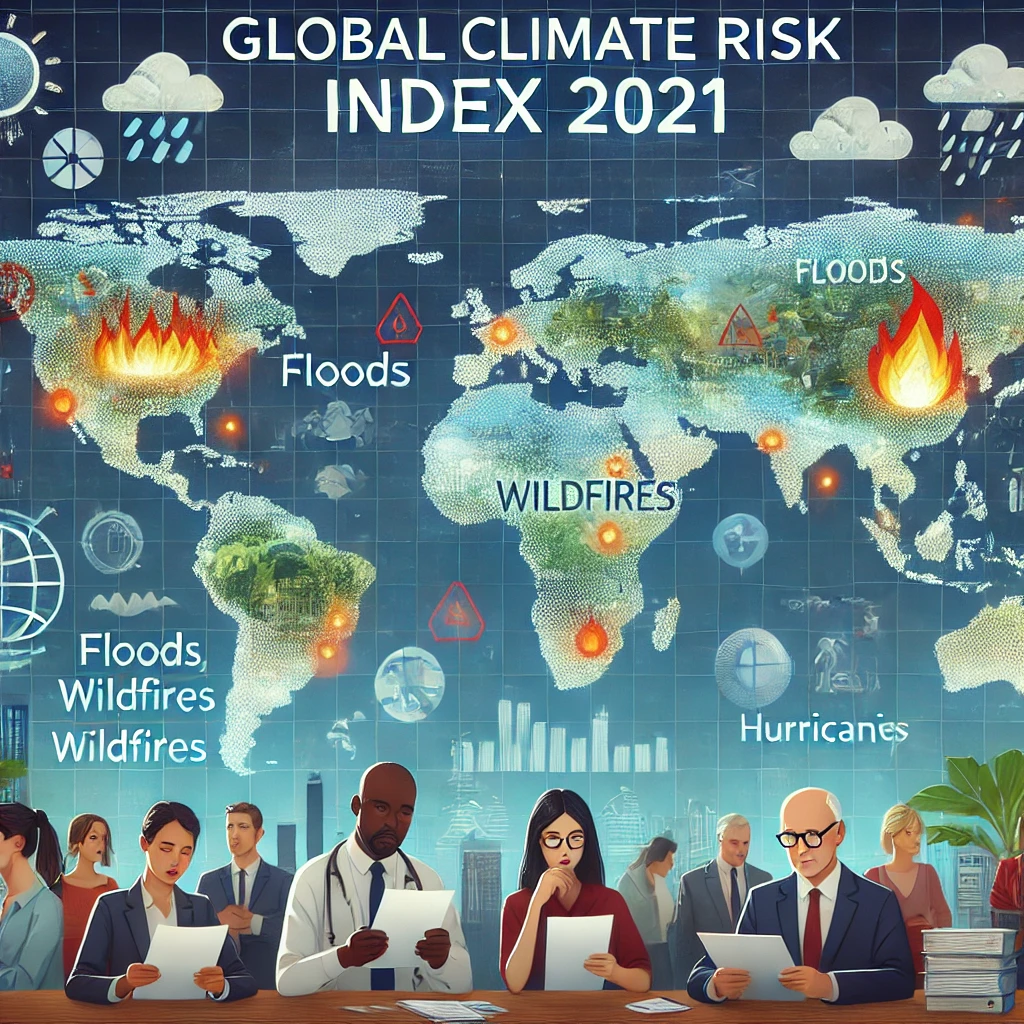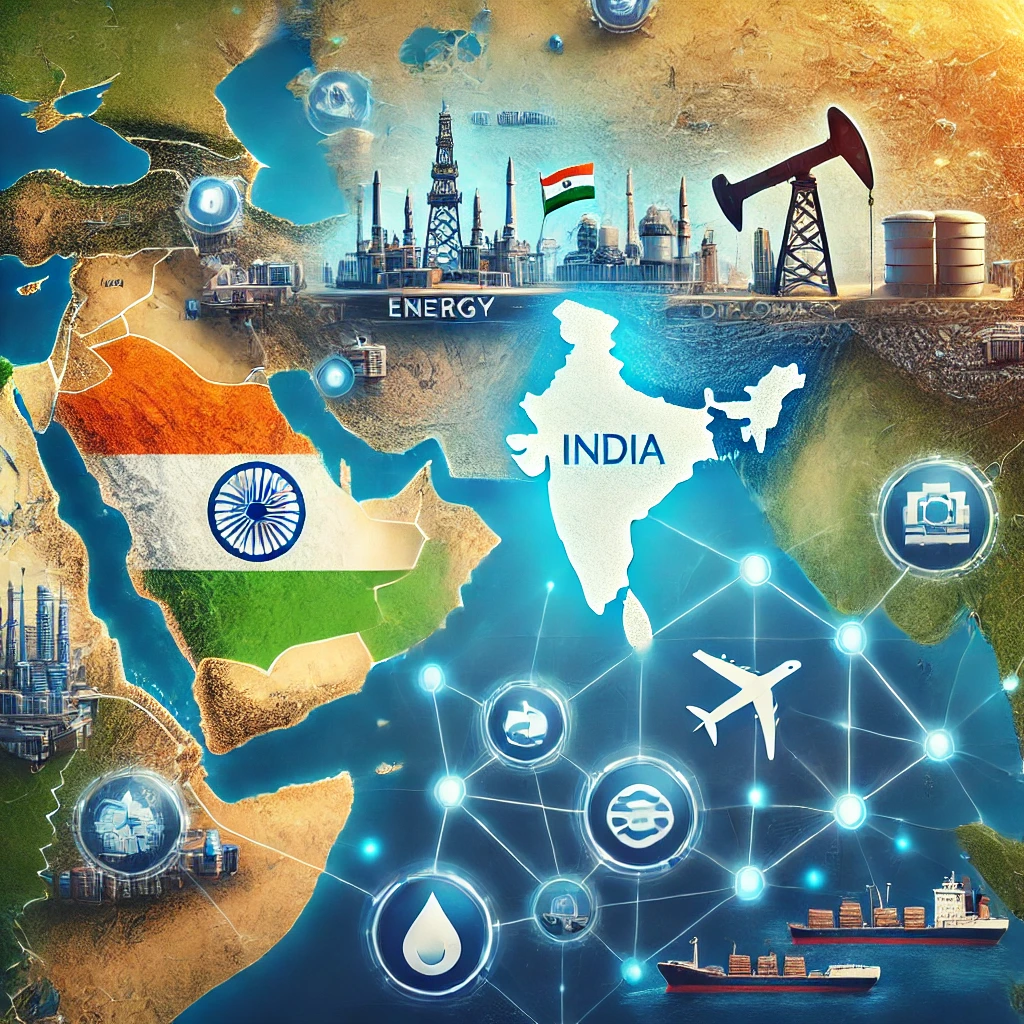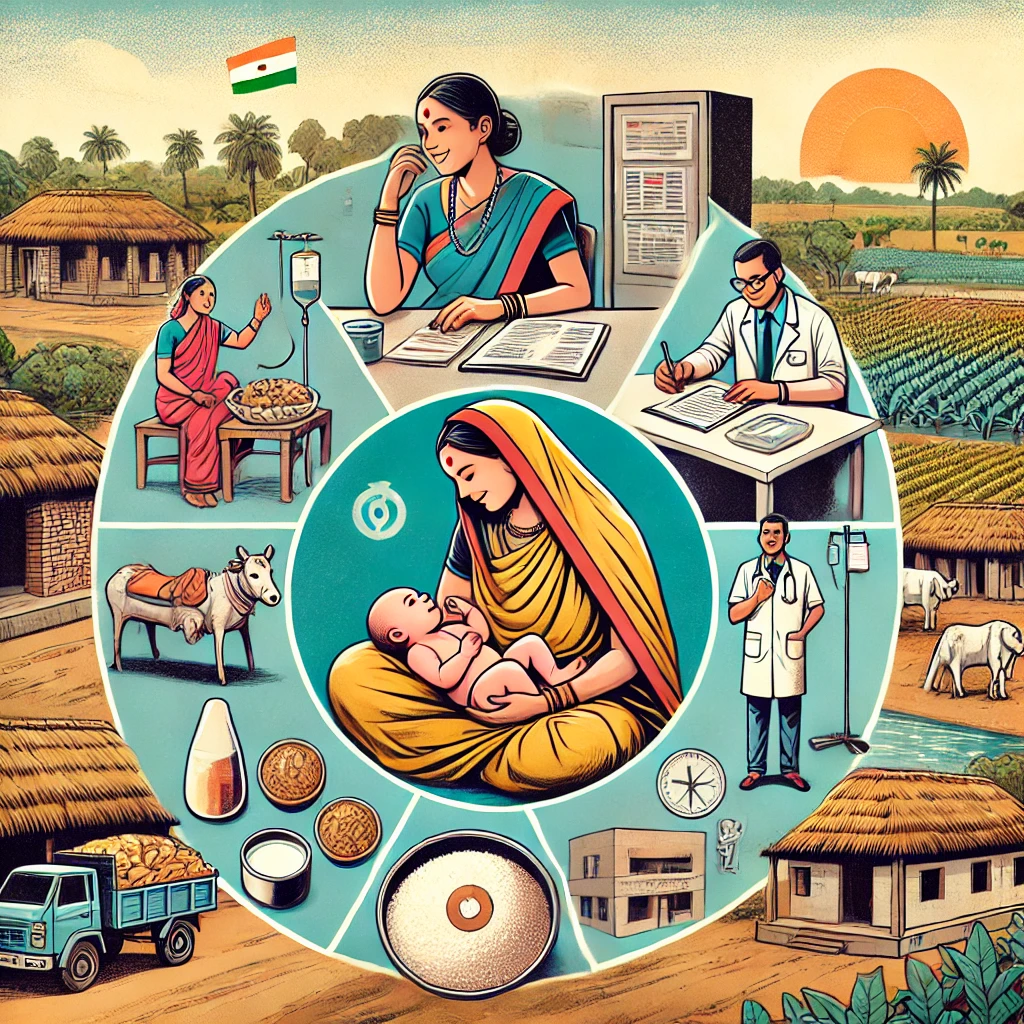The Global Climate Risk Index 2021, released by Germanwatch, examines how many countries and regions are impacted by weather-related loss events such as storms, floods, and heat waves. The report quantifies human impacts (fatalities) and economic losses from extreme weather events in 2019 and over the past two decades.
- Mozambique, Zimbabwe, and the Bahamas were the most affected by extreme weather events in 2019.
- Puerto Rico, Myanmar, and Haiti were the most affected between 2000 and 2019.
- Over the two decades, 475,000 people died due to 11,000 extreme weather events, with economic losses amounting to US$2.56 trillion.
- Developing countries with lower coping capacities are the most vulnerable.
India ranked 7th in the Global CRI 2021. In 2019, extended monsoons and heavy rains caused significant damage, resulting in over 1,800 deaths and economic losses of US$10 billion. Eight tropical cyclones also hit India, with Cyclone Fani being the most devastating.

What is Global Climate Risk Index?
The Global Climate Risk Index, published annually by Germanwatch, assesses the extent of weather-related loss events globally. It focuses on the impact of storms, floods, and heat waves, measuring both fatalities and economic losses. This Index aims to highlight the escalating effects of climate change on different regions and countries, emphasizing the urgency of climate action.
Impact of GCR Index
The Index evaluates the impact of weather-related events by quantifying fatalities and economic losses. It covers a broad range of events such as storms, floods, and heat waves. The extent of these impacts is analyzed across various countries and regions, revealing how both high-income and poorer countries suffer significant damages and losses.
Climate Risk Signals
The findings of the Climate Risk Index underscore the global and indiscriminate impacts of climate change. Extreme weather events affect all continents and regions, hitting the poorest countries hardest due to their vulnerability and limited coping capacity. However, high-income countries are also increasingly suffering from severe climate impacts, indicating a universal threat.
Global Climate Risk Index 2021 Findings
The Global Climate Risk Index 2021 highlights the most affected countries and the nature of weather events in 2019. It provides insights into the countries that faced the highest impacts and examines the types of weather events that caused significant damage, offering a clear picture of global climate vulnerabilities.
Long-term Affected Countries (2000–2019)
Over the long-term period from 2000 to 2019, Puerto Rico, Myanmar, and Haiti were the most affected. These countries consistently faced severe weather events, including tropical cyclones and floods, which caused devastating impacts on their populations and economies, illustrating persistent climate vulnerabilities.
Causes of Losses and Damages
The primary causes of losses and damages in 2019 were storms, precipitation, floods, and landslides, particularly from tropical cyclones. Scientific evidence suggests that the frequency and intensity of severe tropical cyclones will increase with each increment in global average temperature, exacerbating global climate risks.
Socio-Economic Impact
Extreme weather events disproportionately impact low- to lower-middle-income countries and Least Developed Countries. These regions face significant socio-economic challenges due to their limited capacity to cope with and recover from such events, highlighting the need for targeted climate adaptation and support measures.
India’s Position in Climate Risk Index
India’s position in the Global Climate Risk Index has improved, ranking 7th in the 2021 Index compared to 5th in the 2020 Index. This change reflects variations in the impact of weather-related events and underscores India’s ongoing challenges with climate vulnerabilities.
Ranking Improvement
India’s ranking improved from 5th in the 2020 Index to 7th in the 2021 Index. This shift indicates a relative reduction in the impact of weather-related events in 2019 compared to the previous year, although significant vulnerabilities remain.
Monsoon Impact
In 2019, India experienced an extended monsoon season with surplus rains amounting to 110% of normal levels. This led to severe hardships, including 1800 deaths, the displacement of 1.8 million people, and economic damage estimated at US$ 10 billion, affecting millions across the country.
Tropical Cyclones
India was hit by eight tropical cyclones in 2019, with Cyclone Fani causing the most damage. These cyclones led to significant destruction, highlighting the country’s vulnerability to such extreme weather events and the need for robust disaster management strategies.
Environmental Impact
Global warming has severely impacted India’s Himalayan glaciers, coastlines, and deserts. The increased rate of glacier melting, coastal erosion, and desertification are direct consequences of climate change, posing long-term environmental and socio-economic challenges for the country.
Increased Weather Events
India has seen an increase in the frequency and intensity of weather events, including heat waves and cyclones. These changes are linked to climate change and have profound effects on the country’s environment, health, and economy, necessitating urgent climate action.
Conclusion
In conclusion, the Global Climate Risk Index 2021 underscores the urgent need for robust climate action and resilient strategies, especially for vulnerable nations. As future policymakers, UPSC aspirants must recognize the interconnectedness of environmental, economic, and social systems. Strengthening climate resilience and adaptation measures is not just an environmental imperative but a step towards sustainable and equitable global development.


